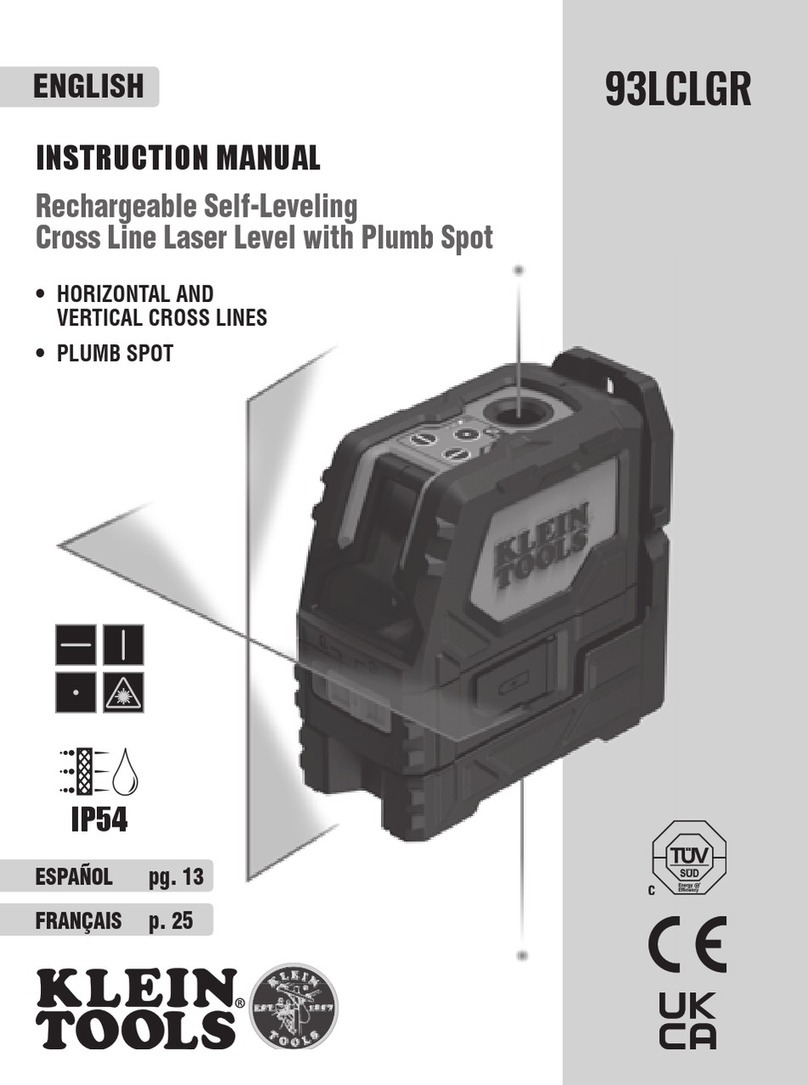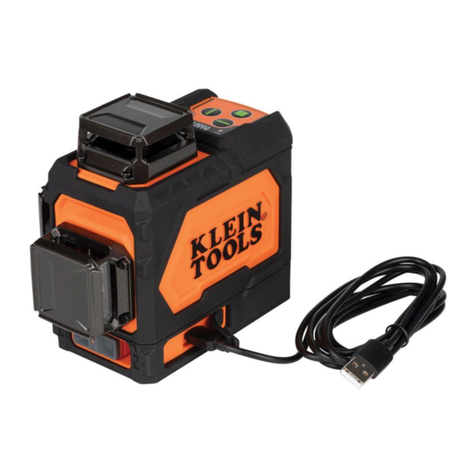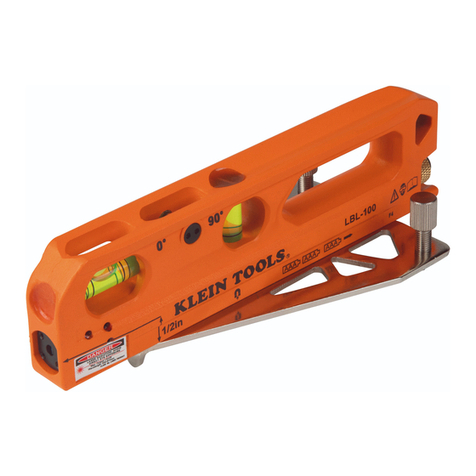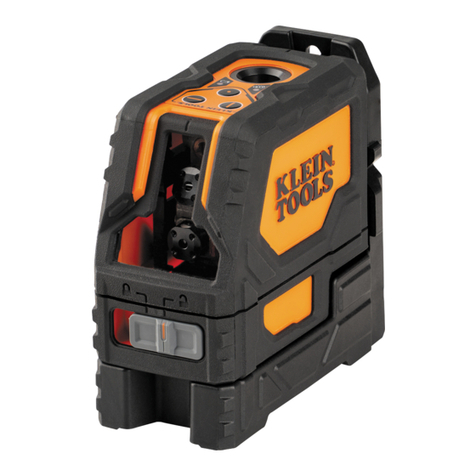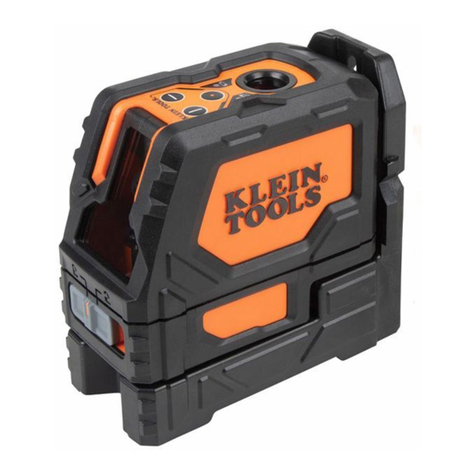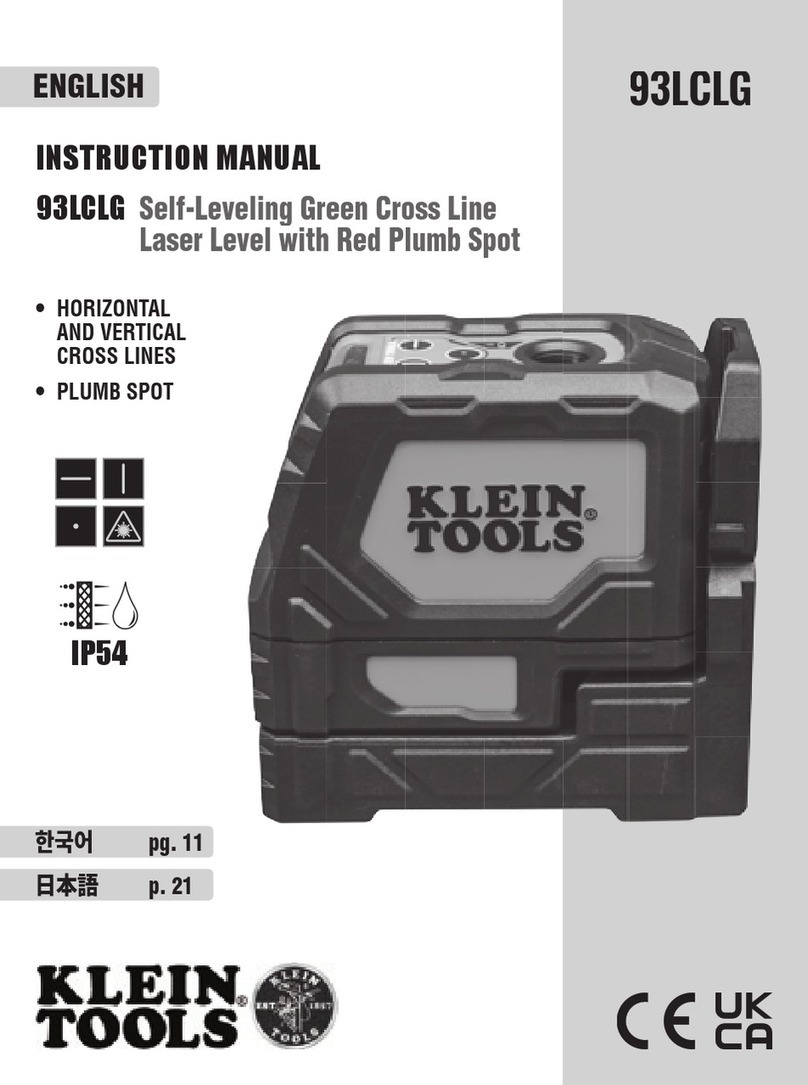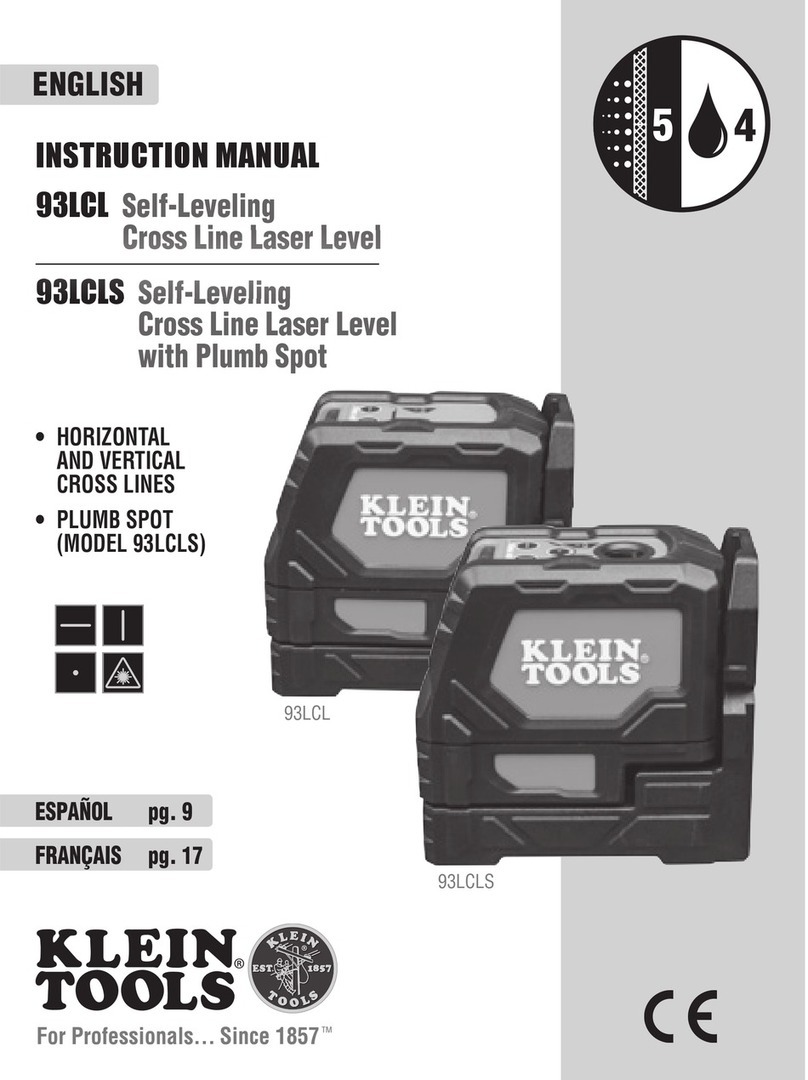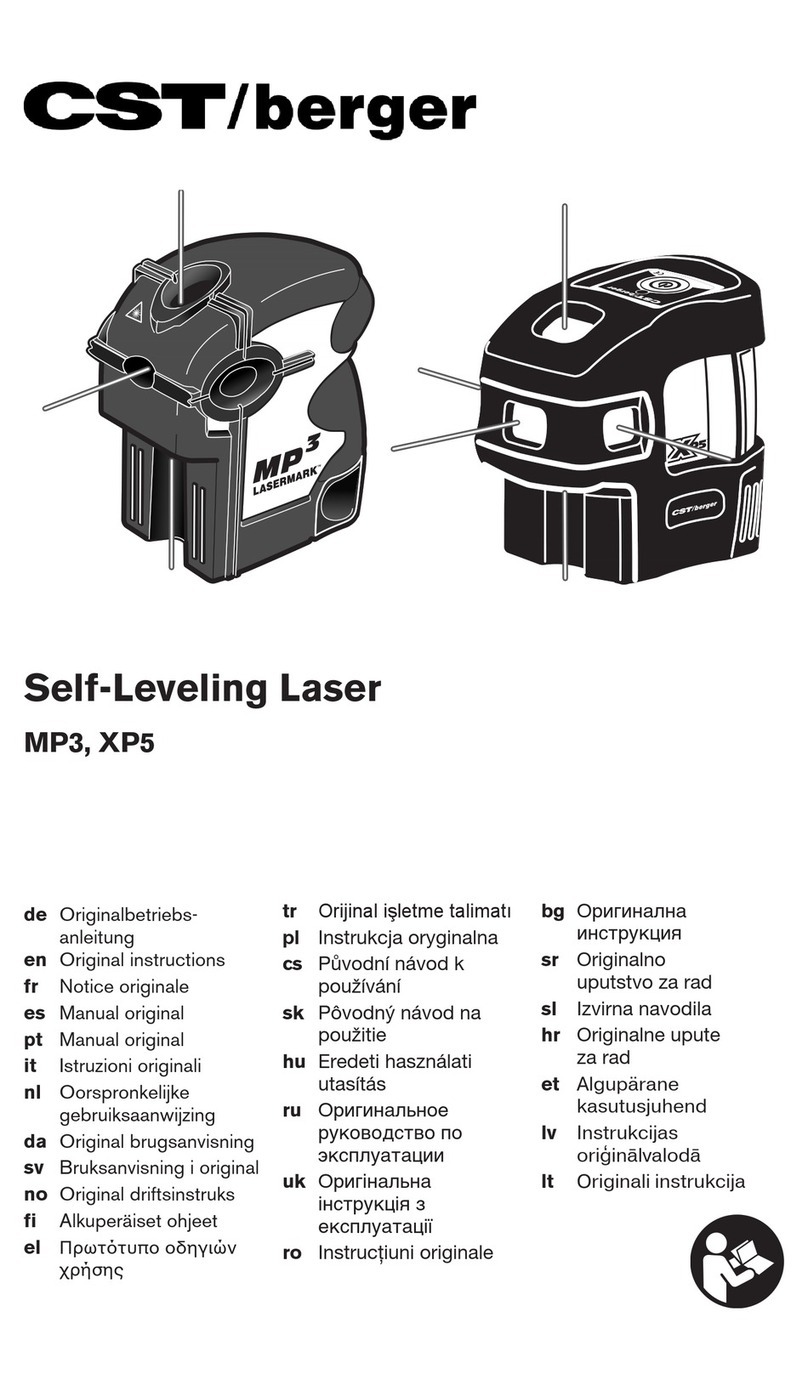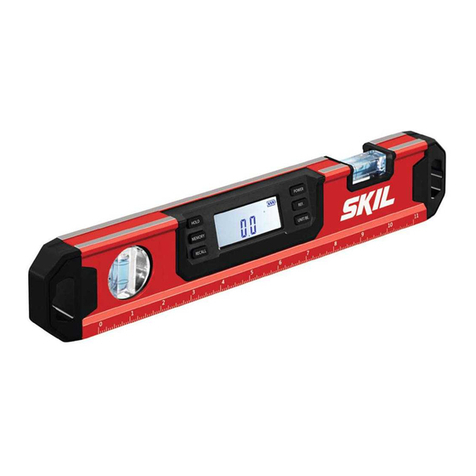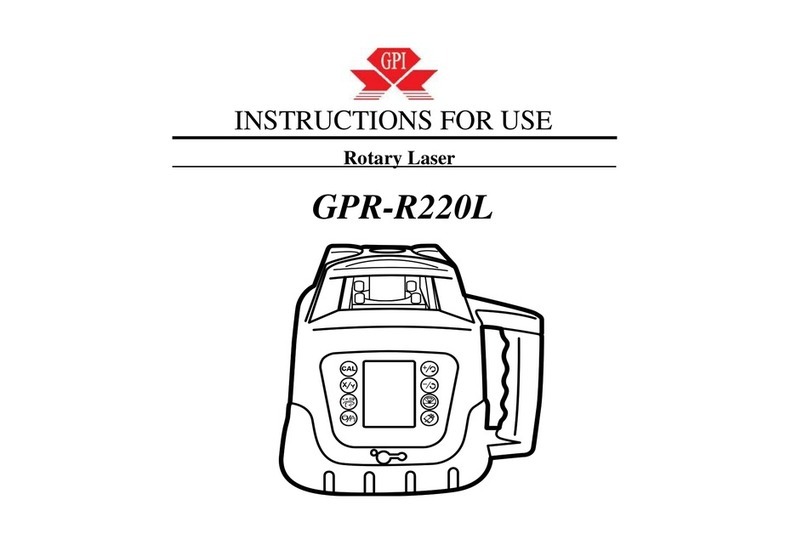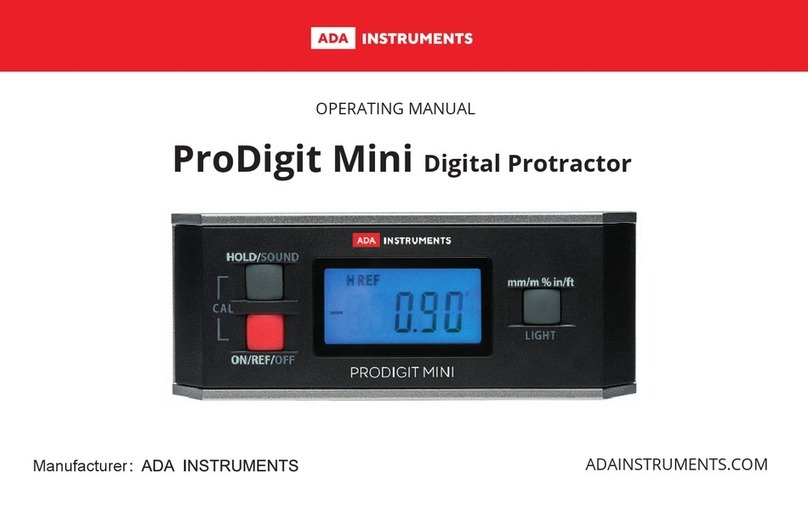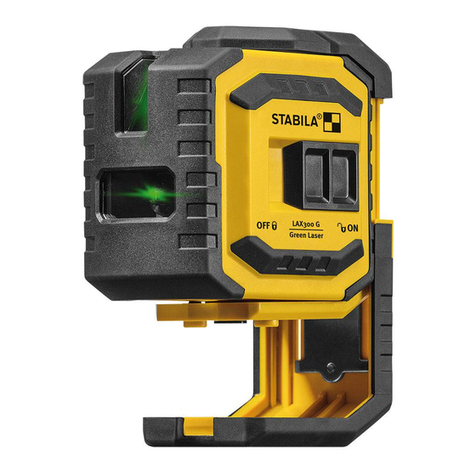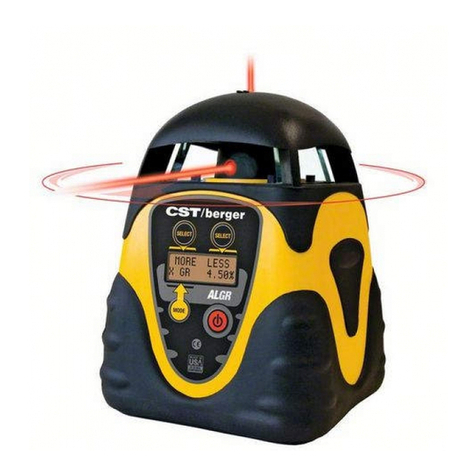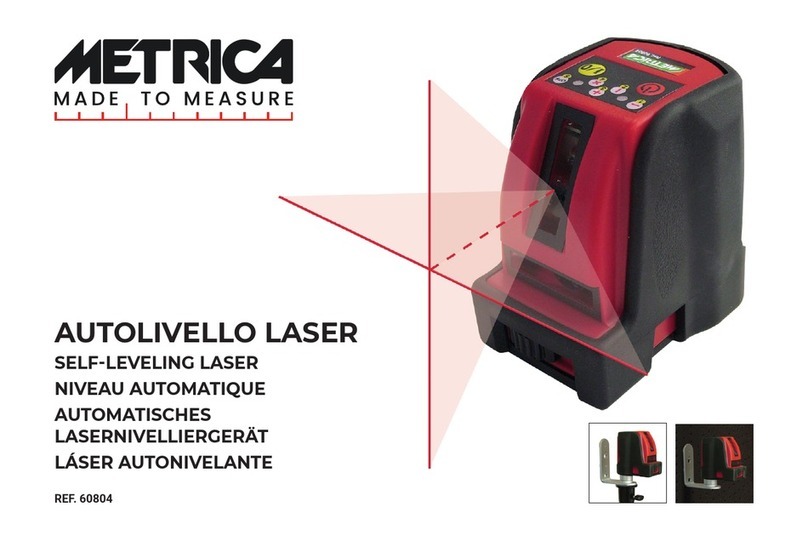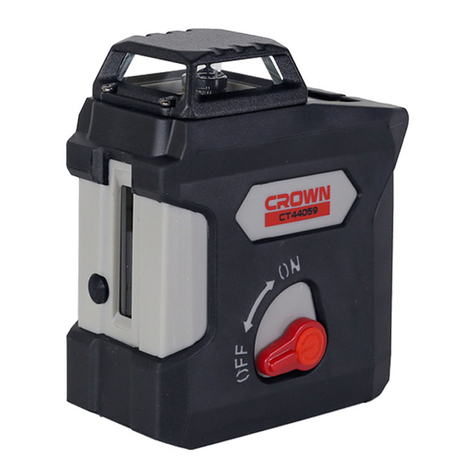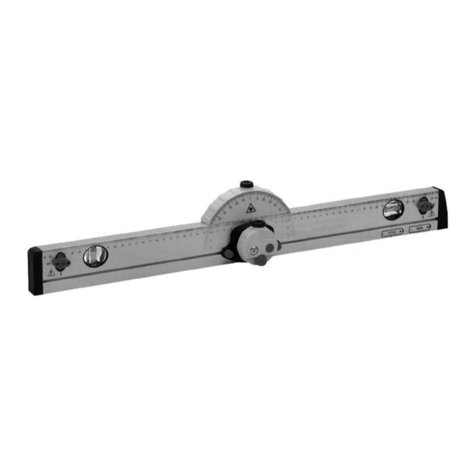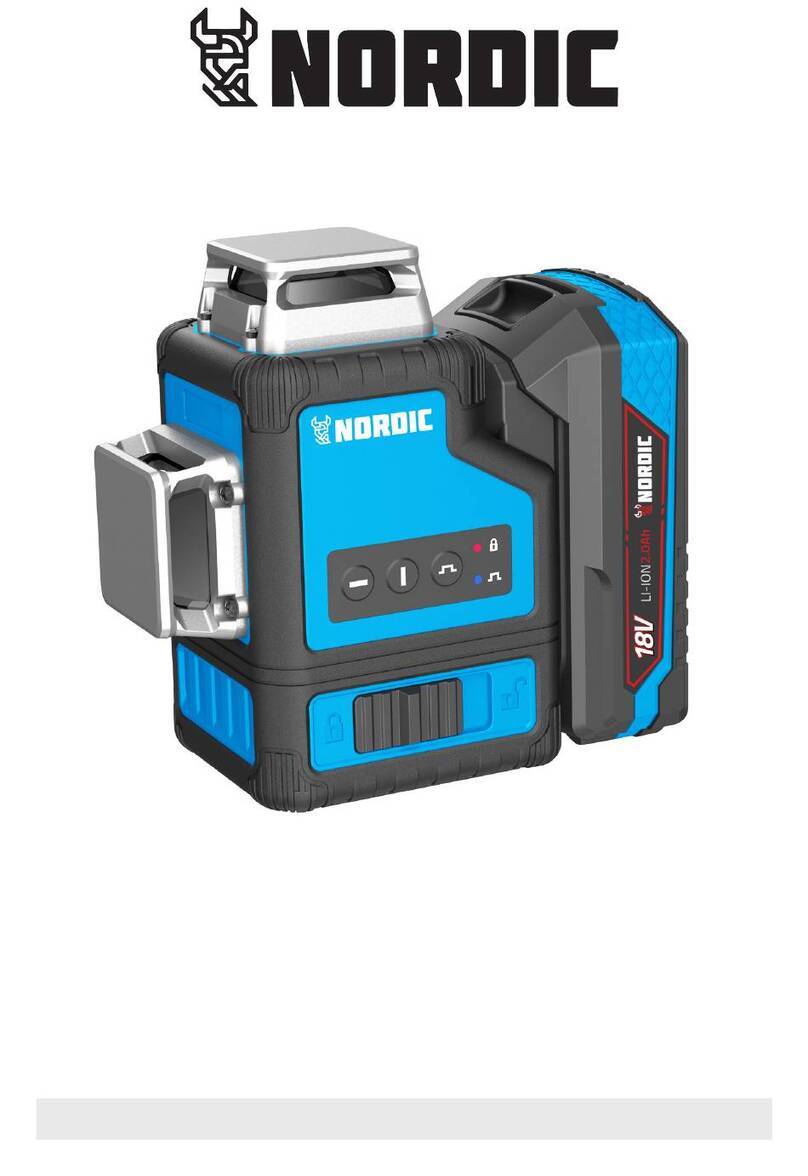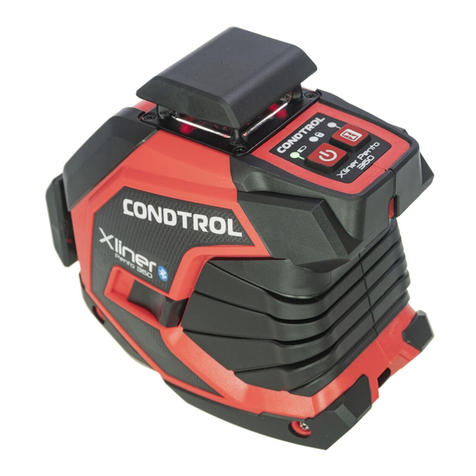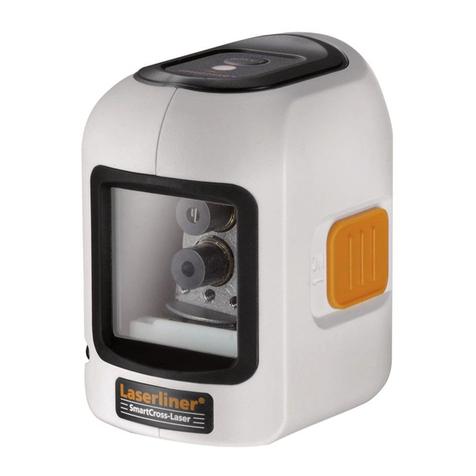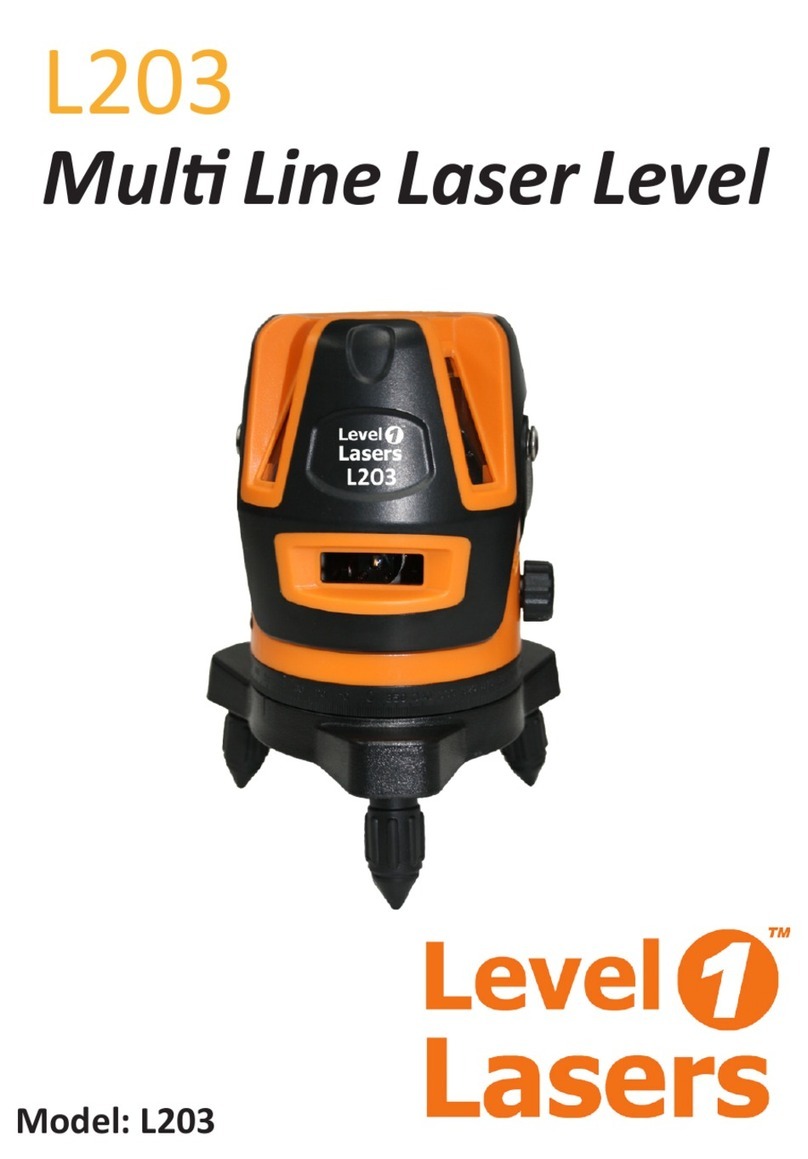
VÉRIFICATION DES FAISCEAUX LASER À DES FINS DE PRÉCISION DU NIVEAU
Inclinaison hors plan du faisceau à l’horizontale (FIG. 2)
Placez l’instrument parallèlement au mur et projetez un faisceau le long du mur,
de gauche à droite, tel qu’illustré. Marquez deuxemplacements (a, b) séparés par une distance
xle long du faisceau. Placez le laser de l’autre côté du mur et projetez le faisceau avec la
marque b, de la droite vers la gauche tel qu’illustré. Finalement, marquez la position c. Si x est
de 9,1m (30pi), la distance verticale ddevrait correspondre à 4mm (≤5/32po). Par exemple,
si xest fixé à 4,6m (15pi), la distance verticale ddevrait correspondre à 2mm (≤3/32po).
Inclinaison vers la gauche/droite du faisceau à l’horizontale (FIG. 1)
Stabilisez l’instrument avec son support de fixation à une distance xpar rapport à la structure
murale verticale, tel qu’illustré. Faites tourner l’instrument sur son support vers la gauche de
façon à ce que le côté droit du
faisceau soit projeté sur le mur
opposé à l’instrument, puis
marquez son emplacement
vertical sur le mur. Faites tourner
l’instrument vers la droite et
marquez l’emplacement vertical
du côté gauche du faisceau.
À environ 10m (33pi), la
distance verticale dentre les
marques du côté gauche et du
côté droit devrait être ≤4mm (5/32po).
Par exemple, si xest fixé à 4,6m (15pi),
la distance verticale ddevrait correspondre
à 2mm (≤3/32po).
FIG. 1
MUR
Distance verticale
entre
les marques
Droite
Gauche
d
G
G
x
FIG. 2
d
a
b
c
x
MUR
MUR
D
D
Inclinaison verticale du faisceau (FIG. 3)
Posez l’instrument au plancher et projetez un faisceau vertical sur une ligne
xd’environ 1,9m (6pi). Marquez le point a au plafond. Placez l’instrument de
l’autre côté de la ligne et marquez de nouveau le point bau plafond. La distance
ddevrait atteindre 4mm (≤5/32po) pour un plafond de 10m (33pi), ou alors
2mm (≤3/32po) pour un plafond de 4,6m (15pi).
FIG. 3
x
d
a
MUR
MUR
PLAFOND
Plomb
(MODÈLE93LCLS seulement, FIG. 4)
Posez l’instrument sur le plancher et projetez
une cible au plafond avec le laser à plomb.
Faites tourner le laser sur 180°et projetez
cette même cible au plafond. La distance
ddevrait atteindre 6mm (≤1/4po) pour
un plafond de 10m (33pi), ou alors 3mm
(≤1/8po) pour un plafond de 4,6m (15pi).
d
FIG. 4
b
180°
93LCL
Niveau laser en croix à nivellement automatique
93LCLS
Niveau laser en croix à nivellement automatique à plomb
1390235 Rev. 05/17 B
